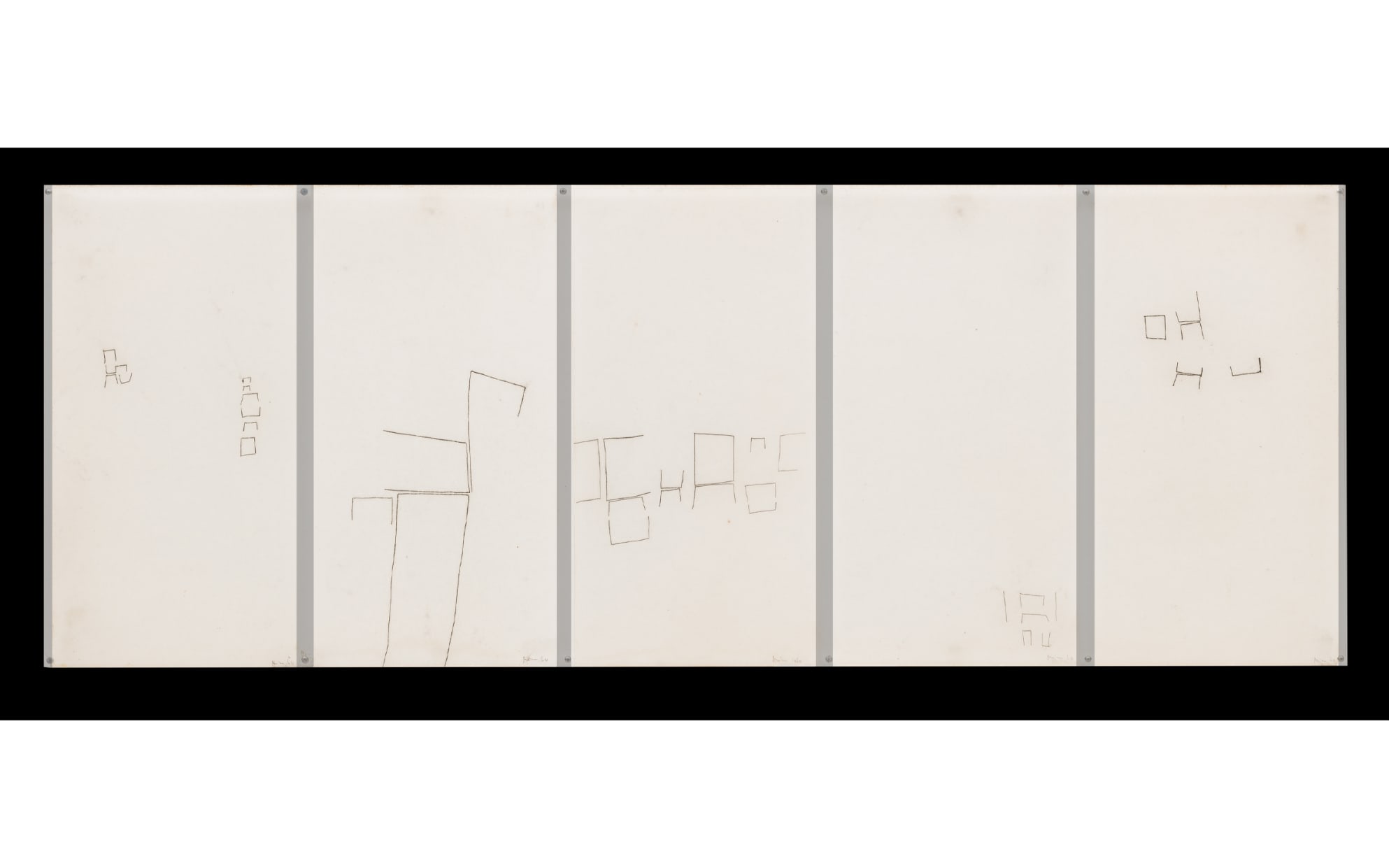Whether it was using photocopiers to shift our understanding of reality, sowing plants to a poetic effect, or making prints as a way to conceptualize absence, many artists featured in ‘OVR: Pioneers’ have developed innovative techniques to contextualize their medium of choice. The practitioners below not only expanded the fields of sculpture, drawing, painting, and printmaking, but also challenged their very definition.

Replicating Reality
Dedicating her early life in America to writing novels, poetry, and short stories, Pati Hill (1921–2014) came to the visual arts later on and employed a photocopier – specifically the IBM-Copier II – as one of her mediums. Although other artists had used this technique of reproduction prior to Hill, her emphasis on the specificity and idiosyncrasies of objects is notable. Copies of flowers, clothing, and tools first appeared opposite her writing in Slave Days (1975), a poetry collection created in response to having a child and living a domestic life. She subsequently compiled the series ‘Alphabet of Common Objects’ in the late 1970s, works from which are included in Air de Paris’s (Romainville) presentation. In her meticulously detailed xerographs, the cracked leather lines of a pair of gloves contrast the smooth, shiny surface of buttons; the sheepskin lining of a jacket fills a picture plane with tender locks; hair curlers look like geometric abstractions. Ultimately, Hill used photocopies as a starting point from which words could weave new webs, enabling us to wander into another realm.

Corporeal Counteraction
By 1965 the Polish artist Maria Pinińska-Bereś (1931–1999) ventured from figurative sculptures into abstraction, using soft, lightweight materials as a means of subverting tired and reductive associations of sculpture with male genius. This was particularly radical in an environment dominated by men and the authoritarian regime of the communist government; Pinińska-Bereś is now considered a feminist pioneer in Poland. Alongside her sculptures and drawings, the artist also maintained a performance practice that challenged the reductive role of women in society. The Approach’s (London) presentation includes photographic documentation of The Banner (1980) and Laundry II (1981). For the former, Pinińska-Bereś wandered through Krakow’s snowscape dressed in pink and holding a banner emblazoned with the word Różowy (‘pink’), while for latter, she hung up freshly washed white fabrics, each bearing a letter, to spell out ‘feminism’. Pinińska-Bereś’s art speaks to a world where female subjectivity and women’s labors are seen, sensed, and celebrated.

Dimensions of Language
As one of Latin America’s pioneering Postwar women artists, the Swiss-born Mira Schendel (1918–1988) reconfigured what constituted Modernism in Brazil. Enamored with the idea of emptiness, Schendel focused on the medium of monotypes and often used sheets of rice paper to convey concepts of absence, transparency, and time. The technique she developed for her ‘Monotypes’ series – a few works from which are presented by Bergamin & Gomide (São Paolo) – mediated the delicacy of the paper without ripping it: She would cover a sheet of glass with ink followed by a layer of powder to prevent the page from sticking and immediately absorbing the ink; then she would delicately draw lines into the overlaid paper with her fingernail or another pointed instrument, brining it into contact with the ink. Gentle light and dark blots delimit a subtle sense of emptiness. Her poetic, quasi-symbolical texts use a language of mark making that includes letters, arrows, scribbles, cuts, and deletions to express how chance and curiosity can create an entirely original dimension.

Poetics of Plants
The radical poetics of Austrian artist Lois Weinberger (1947–2020) placed plants at the center of his world to bridge the gap between society and nature. Sowing plants into post-industrial peripheries and the outskirts of urban wastelands, he turned controlled zones into verdant wildernesses. His ruderal interventions (where he planted weeds) enacted an ongoing process of change, harnessing time and nature as mediums. On view at Galerie Krinzinger (Vienna) is a series of photographs documenting Das über Pflanzen ist eins mit ihnen, documenta X (Bahngleis bepflanzt mit Neophyten aus Süd- und Südosteuropa), a work made by Weinberger for documenta X in Kassel, Germany in 1997. With his mediations often described as ethno-poetic, he planted a 100-meter railway track with neophytes from southern and southeastern Europe. Plants burst through beams and, eventually, a great swathe of green took over. Weinberger’s piece was restored in 2015 and remains in Kassel today.
‘OVR: Pioneers’ will run March 24–27, 2021. Find out more here.
Louisa Elderton is the Curatorial Editor at Gropius Bau, Project Editor of Phaidon’s ‘Vitamin’ series, and an independent art critic contributing to Frieze, Artforum, and Flash Art, among other publications.
Top image: Pati Hill, Untitled (rose) (detail), 1990. © Photo Marc Domage. Courtesy of Air de Paris, Romainville.
